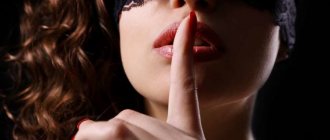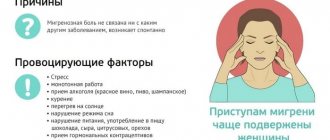Tickling is one of the main entertainments for children. Parents often join in children's play with pleasure, also trying to entertain the child by tickling them. This is a very interesting activity that makes a person laugh, but at the same time he instinctively tries to protect himself from other people’s touches. But why does this happen and how harmful is it?
What does tickling give a person?
The intense impact on the skin of the fingertips causes a person to have both a protective and joyful reaction. The most sensitive areas for tickling are the feet, neck, armpits and stomach.
Tickling is a kind of game that evokes positive emotions. During it, breathing quickens, the heartbeat slightly accelerates, and gusty laughter occurs.
After the cessation of prolonged tickling, a feeling of slight fatigue appears. This is an excellent process of releasing energy that children unconsciously do during play. And some adults in a friendly company may lightly tickle each other for fun.
The smell of sweat
Each of us has encountered a situation when there is a person nearby whose smell of sweat literally makes us sick. Holding our nose, we think: “How can his loved ones tolerate him? Although what kind of loved ones... Who would live with such a stinker? However, it soon turns out that the person has a spouse, and he (she) does not find this smell unpleasant. How so?
The smell of illness. What does the body smell like with this or that pathology? More details
“A lot of glands that secrete sweat are located in the armpit area. The hair growing there enhances the smell of sweat and concentrates it. This smell has an important biological function. Our ancestors used it to find marriage partners. Nature intended it this way: the more different the genotypes of the parents are, the better for their offspring - they will have a more diverse set of genes, explains Nikolai Zakharov. — Scientists have proven that if a person finds someone else’s smell pleasant, it means that its carrier is suitable for him as a sexual partner according to his genotype. But the repulsive smell says otherwise.”
True, there is an opinion that it is not sweat that a person smells, but the microbes that live in abundance on his body. And sweat, which is almost 100% water, only creates good conditions for their reproduction.
Interesting facts about tickling
There are several interesting facts associated with tickling:
- A person will experience an emotional outburst only if someone tickles him. Self-tickling does not cause any reaction in most people. The exception is people suffering from schizophrenia with delusional symptoms. Mentally ill people can sometimes tickle themselves and be quite susceptible to this action, laughing and making convulsive movements. This is due to the fact that at such a moment the schizophrenic perceives his hands as “foreign” or as if they are controlled by someone else;
- Tickling sometimes played the role of torture . For example, the Nazis experimented with the effects of prolonged and intense tickling on concentration camp prisoners. However, the Germans were not the first in this regard. In ancient Rome, for some criminals, corporal punishment was replaced by tickling. Their feet were washed with salt water and goats were brought in to lick it off the sensitive skin of their feet. From the outside it does not seem like torture, but in fact, after some time the tickling brought a feeling of severe pain;
- If a child decides to tickle not his parents, but his grandparents, then he will be disappointed. An older person will not react so violently to a prank. The point here is not endurance, but the fact that tactile sensitivity decreases with age;
- There are people who suffer from titillarephobia . This is a rare condition in which a person experiences an inexplicable fear of tickling. For him, it causes unpleasant and sometimes painful sensations, accompanied by panic.
Goosebumps
They cover us from the cold. But it happens that their appearance is caused by some event colored by strong emotions - someone’s action, a movie seen, music listened to...
This mechanism, which in the language of science is called piloerection, and in common parlance - “goose bumps”, also came to us from primitive people, and to them from their mammalian ancestors. Goose bumps on the surface of the body are caused by the contraction of tiny muscles in the skin. They raise the hair when freezing so that the heated air lingers longer near the body and does not fly away into the surrounding space.
"Goose pimples". Why do goosebumps appear and run all over your body? Read more
The same reflex is triggered in a situation of danger: raised hair makes the animal (look at a cat when it meets a dog) more massive, giving it a frightening appearance. With strong emotional reactions - rage, fear, delight - our nervous system is excited, and this can lead to goosebumps. If we had wool, it would stand on end at that moment.
Piloerection has lost its practical meaning for humans, turning into a rudiment, like some organs of our body - the coccyx, the appendix. After all, Homo sapiens long ago lost their thick coat of fur, and invented clothing to protect them from the cold.
Why is a person afraid of tickling?
The exact reasons for the unconscious fear of tickling and reflexive attempts to cover the tickled parts of the body have not yet been established. Physiologists only suggest that an active reaction to intense and quick touches is associated with the ancient protective function of the body .
The fear of tickling could well have been formed on the basis of a desire to protect oneself from small animals (mice, rats) and insects. This is understandable, because small bugs crawling on the body are a potential danger. When tickled at the subconscious level, the brain seems to shout: “Something is running all over you! Get rid of it quickly!”
The problem with this hypothesis is that it does not explain the laughter that occurs when tickled. After all, laughter rarely occurs during danger and is usually associated with increased nervous tension. But in the case of tickling, the person almost always laughs.
Some researchers believe that the simultaneous fear and laughter during tickling is quite reasonable. A person initially perceives touching the skin as a danger. But then the fear passes, degenerating into nervous laughter.
Another inconsistency in the hypothesis about the protective role of tickling relates to the same reaction of all races to tickling. Logically, northern peoples should not be afraid of tickling, or at least not react to it so much. After all, there are no dangerous insects in their places of residence.
Is it possible to stop feeling afraid?
There are several methods for eliminating the fear of tickling. Let's look at the main ones.
- Having taken a comfortable position, you need to imagine that the process has begun. If unpleasant sensations and trembling occur, you need to switch to any pleasant thoughts. Repeat at least three times.
- The second way is to ask another person (preferably a close one) to put their hand on the most vulnerable part of the body. It could be the neck or foot. When the first cramps appear, you need to try to relax and concentrate on the feeling of heaviness and warmth of the touching hand. This method must be repeated daily until the touches are perceived calmly. After this, you should ask the same person to begin tickling gradually. If the process causes discomfort, you need to stop, but continue to keep your hand on your body.
Is there a risk of dying from tickling?
theoretically possible that a person will die due to prolonged or intense tickling . After all, the brain actively sends a danger signal, causing the nervous system to become excited.
Inhalations and exhalations become sharper, the person literally “chokes” with laughter. If he has problems with the respiratory system, then there is a certain risk of suffocation.
Also, do not forget about the increased heart rate when tickled. People with heart disease can have an attack with a tragic outcome.
However, no deaths due to tickling have yet been recorded . Therefore, you should not prohibit children from such pranks. In addition, they usually quickly get bored with the game of tickling, and they switch their attention to something else.
Terminology 4
Tikling adherents have their own terms.
Tickler is an active partner. He is not only an initiator, but also a manipulator. It is the tickler that performs all the actions. This is a dominant, speaking in the language of BDSM. Tickler receives pleasure not only from his actions - touching and hugging, but also from contemplation. After all, the partner wriggles, the body takes bizarre poses, and everything happens dynamically, sharply, excitingly.
Tiklya is a passive partner. In BDSM language it means “bottom”. Tiklya is tickled. The sensations that this process causes are laughter through tears. Tickling can bring real suffering, so those who like to suffer become tickles. Well, since tickling also causes strong arousal, the tickle can easily laugh to the point of real orgasm. Actually, this is the meaning of tikling.
The harm and benefits of tickling
Tickling brings many benefits :
- Helps you get closer . For a small child and parents, tickling is a form of play interaction. It does not lose its relevance even as a person grows up. Psychologists include tickling as a type of social game characterized by maximum intimacy and trust;
- Promotes weight loss . Of course, you shouldn’t think that you can eat everything and lose weight with tickling. But still, it will help a little for those who decide to go on a diet. Physiologists have found that laughing hard during a ten-minute tickle can burn up to 40 calories;
- Is part of sexual pleasure . Some couples willingly include tickling in foreplay. It promotes faster arousal, and for some it is even a harmless sexual fetish.
Tickling also has its disadvantages :
- Has a bad effect on the nervous system of infants . It is for this reason that pediatricians do not recommend tickling children under one year old. Babies are sensitive to physical contact. Tickling will be small, but still stressful for the nervous system. Until the baby begins to walk confidently, it is better to limit himself to light and soothing touches;
- Unexpected reaction of some people . If a person begins to be tickled unexpectedly, the first reaction will be a flinch and a sharp turn towards the potential threat. A man who has undergone military training may unknowingly use a close combat technique. And it’s good if the joker gets away with only a bruise;
- Increased blood pressure and adrenaline release. This is why you should not tickle hypertensive patients.
It turns out that tickling is not always harmless entertainment. It is contraindicated in infants and people with high blood pressure. Also, do not unexpectedly tickle people whose profession is related to the military sphere or martial arts.
Tickling accessories7
Tickle addicts have their own set of accessories. They help achieve the brightest and most intense sensations. After all, real tikling involves achieving climax without penetration. Everything that is at hand is used.
- Feathers.
It is enough to pull out a feather from the pillow, and you find yourself in your hands with a very powerful tool that can make even a dead person laugh. The sensations are so strong that even a sound sleeper wakes up almost instantly. Feathers can be used to affect a variety of areas of the partner’s body. This is the face, especially the nasolabial area, and the feet, there is a small risk of catching a tasty kick, and the palms, and the inside of the elbows, and the nipples, and the genitals. In general, the feather can work throughout the body.
- Brushes
Whether it’s painted or from a canopy, there’s no difference. The effect is the same as that of a feather, depending on the brush and area of influence.
- Threads and laces
The principle and area of stimulation are the same as with feathers or brushes.
- Lashes or stacks
These are not only percussion instruments. They excel at the poking or tugging technique. Area of application: ribs, back, buttocks.
- Brushes, combs, knitting needles
These are nail substitutes. Objects with pointed ends are intended for the scraper or charioteer technique.
- Textile
A very erotic accessory. It doesn’t always cause tickling, but the slight sliding of a silk scarf over your back or chest and stomach will undoubtedly bring incredible pleasure.
Vestiphobia is the fear of getting dressed.
0 Vestiphobia is the fear of dressing. Yes, yes, such a phobia exists. And there is no need to confuse people who are simply afraid to dress and those who do not do this on purpose - nudists. A person who suffers from vestiphobia usually wears loose, loose clothing that does not meet any standards. Or, in general, he tries to get away from society so as not to be dressed, then this can develop into social phobia, which is much more unpleasant. What could be the causes of vestiphobia? Usually they lie in the childhood of the sufferer. Perhaps the demands on his clothing were too high, which developed into a desire to avoid all prohibitions. Maybe you constantly had to wear clothes that were too small and tight, which caused pain and discomfort, which later also became one of the reasons for dislike and fear. In the end, regular over-tightening of laces, ties, straps and all that stuff. There can be many options. It is necessary to strive to get rid of this phobia, as it causes the patient a lot of trouble. With quality therapy, this problem is completely solvable.
Aurophobia - fear of gold.
0 See all photos in the gallery
In ancient times, there was a type of execution - they poured molten gold into the throat. Survivors of this procedure almost certainly developed aurophobia. However, jokes aside, such a phobia really exists. There are a lot of different stories and legends associated with gold, some much more severe than those told in the first paragraph. In any case, a similar story heard in childhood can make a strong impression. As a result, in the future, an adult may begin to panic at the sight of gold items, and from touching gold, symptoms similar to allergic ones may develop. This phobia is highly treatable and treatment does not take much time. Therefore, turning to a psychologist is highly recommended; of course, you can live without gold, but it’s better not to be afraid of it.
Causes of tickling in the chest
Several different disorders can cause chest tickling
Chest tickling can be caused by conditions that do not pose a serious problem.
Colds and hay fever, also called hay fever, can cause a tickling sensation in the chest or throat. With such problems, the symptom in question occurs quite often, and in most cases it goes away within a few days. People in such situations require minimal treatment, and some do without treatment at all.
Other cold symptoms include the following:
- rhinorrhea or nasal congestion;
- fatigue;
- cough;
- sneeze;
- headache;
- aching muscle pain;
- increased body temperature;
- sore throat.
Other symptoms of hay fever include the following:
- cough;
- sneeze;
- rhinorrhea or runny nose;
- itching in the throat, mouth, or nose;
- aching muscle pain
- headache
- fatigue;
- irritated and red eyes.
In some cases, chest tickling indicates more serious medical conditions, such as those listed below. Such diseases require longer treatment.
Bronchitis
Bronchitis is characterized by inflammation of the airways through which air moves in and out of the lungs.
This condition often develops after infections cause high volumes of mucus to be produced in the airways. Microorganisms that lead to colds and flu often cause bronchitis.
A buildup of mucus in the airways can cause tickling. The body reacts to this feeling by secreting mucus during coughing.
Other symptoms of bronchitis include the following:
- sore throat;
- cough;
- fatigue;
- aching muscle pain;
- rhinorrhea or nasal congestion;
- headache.
Asthma
Shortness of breath and wheezing often occur with asthma
Asthma is a common medical condition that affects the lungs and affects people throughout their lives. This disease is characterized by narrowing of the airways, which leads to difficulty breathing. Asthma can develop at any age, but people most often begin to notice it in childhood.
Other symptoms of asthma include the following:
- dyspnea;
- cough;
- whistling sounds when breathing;
- feeling of tightness in the chest.
Irregular heartbeats
Irregular heartbeats or arrhythmia is a condition in which the heart beats abnormally. A sign of this condition may be a tickling sensation in the chest.
Arrhythmia occurs in many people. It often does not lead to serious consequences, but in some cases it is a dangerous sign that poses a threat to health.
The main symptoms of arrhythmia are single premature heartbeats or a flurry of rapid heartbeats, which can lead to a fluttering feeling in the chest or neck.
Coulrophobia is the fear of clowns.
0 This phobia is an abnormal or exaggerated fear of clowns. It is often found among children, but there are also cases of this type of phobia in adolescents and adults. This fear is acquired, as a rule, after some unsuccessful communication with clowns, or after a person encounters an ominous image of a clown in the media. The strange appearance of the clown, swollen red noses and unnatural hair color makes these faces so mysterious and insidious. Adults who are victims of this type of phobia know that their fears are completely irrational and illogical, but they cannot cope with the emotions that overcome them.










